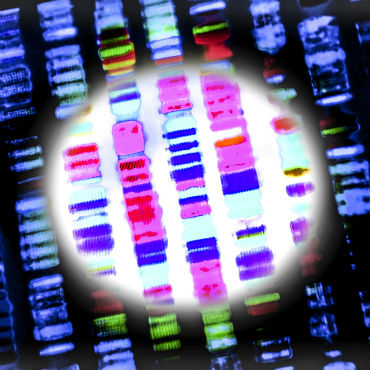DNA data storage capabilities hold promise for federal agencies

DNA-based data storage technologies could be a more secure answer for federal agencies' encrypted data, according to researchers.

Researchers at national and university labs are closing in ways to use the basic building blocks of life to store massive amounts of data, which could offer federal agencies a more effective way to store sensitive data long-term.
The emerging technology offers a more durable alternative to tape- and disk-based data storage that degrades and can become obsolete. According to researchers working on the DNA-based storage efforts, those traditional technologies have to be re-written every decade or so and cloud- or server-based storage requires a vast amount of electricity to maintain.
Researchers at universities and federal laboratories are banking that storage capabilities based on artificially created DNA offer a better option than tapes and disks and can store exponentially larger amounts of data in less space.
Their research harnesses new commercial oligonucleotide synthesis and DNA sequencing equipment developed in the health and biological science industries. They say those technologies have allowed them more effective ways to produce the artificial DNA blocks that are the foundation of the data storage capabilities in bulk and in the lab.
Researchers have developed algorithmic approaches to convert digital data's long codes of ones and zeroes into the four basic building blocks of DNA sequences -- adenine, guanine, cytosine and thymine -- with more accuracy than ever with such equipment. The artificial DNA can be used to store petabytes of data in very stable conditions for a very long time, according to researchers.
A team from the Molecular Information Systems Lab housed in the University of Washington's electrical engineering building, is collaborating with Microsoft Research, to developing a DNA-based storage system that it expects could address the world's needs for archival storage.
The UW researchers, like others, say that the DNA-based technology can store information millions of times more data, more compactly than current archival technologies.
Researchers at the Department of Energy's Sandia National Laboratory who are working on their own DNA-based, encrypted storage system said they are actively looking for federal agency partners to help it develop the system. Their work is funded by the lab's Directed Research & Development program.
George Bachand, a Sandia National Laboratories bioengineer at the Center for Integrated Nanotechnologies and his wife Marlene, a Sandia biological engineer, have developed what George says is a "practically unbreakable" encryption key for its DNA data storage effort.
Bachand said in a July 11 statement on his research, new technology has paved the way to take synthetic DNA, called gene blocks, and stitch them together into artificial chromosomes. Those chromosomes can be re-written with all manner of real-world data.
"Researchers in the field have made incredible progress in reducing the time and cost of both synthesizing and sequencing DNA," Bachand told FCW in an email. "Most of this work is driven by the medical and biology community, but there are a number of researchers and small companies working towards advances in using DNA as a storage medium. One of the greatest challenges that the community faces is the ability to synthesize and assemble DNA strands of a large enough size to store large documents."
Although the technique is not inexpensive at this point, Bachand said its prime value lies in its stability and security.
"At this stage, the cost and time involved in writing/reading the data cannot match industry standards for digital information storage. The cost and time is something that is presently being addressed," he told FCW. "We see the greatest benefits of our technology in the robustness afforded by DNA as a storage medium, and the enhanced security afforded by our encryption process."
To prove the durability and security of their method, according Sandia, the Bachands encoded an abridged version of a historical letter written by President Harry Truman into DNA. They then mailed the DNA, which was stuck onto Sandia letterhead, around the country. After the letter's cross-country trip, the team extracted the DNA from the paper, amplified it and decoded it within 24 hours, according to the lab.
Sandia's July statement notes that readable DNA has been retrieved from the remains of 600,000 year old remains of ancient horses, illustrating the potential durability of data stored with the technique.
Bachand said he's ready to take his research to the next level, potentially tapping a federal agency partner. "Our work over the past few years has developed a proof-of-principle with respect to storing encrypted information in DNA," he told FCW. "I believe that we are at a point in our work where we can move beyond the demonstration phase and fully validate our system. We are presently seeking to engage other federal agencies who may have specific needs within this context (i.e., long-term, encrypted storage of sensitive information)."
Bachand said his next step in developing the storage system is to validate its strength and security. "We need to consider how the DNA would be stored for specific applications and assess the potential for degradation/deterioration over time. We also need to validate that the encryption methodology is robust against brute-force decryption."
In the meantime, he said Sandia is "actively pursuing" patents for the technologies involved in the project and there is a search for outside sponsors who are interested in the research, especially if they have specific applications that match up well with the technology.


